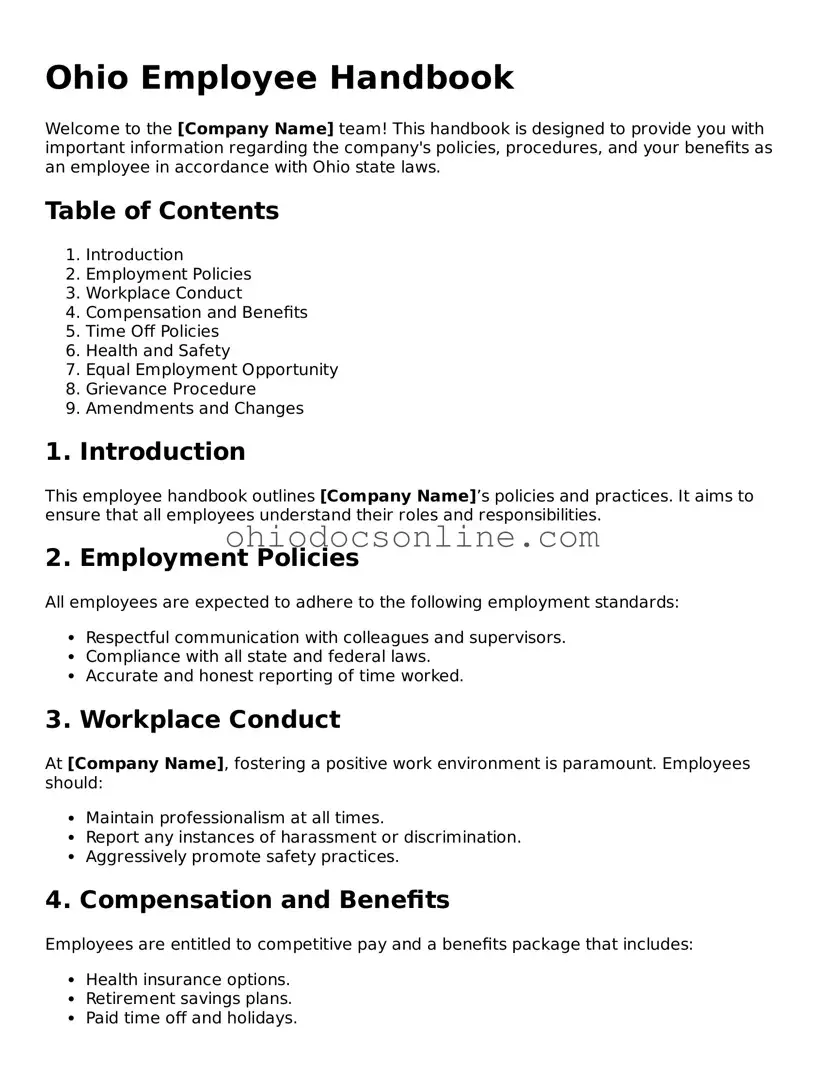Printable Employee Handbook Template for Ohio
The Ohio Employee Handbook form serves as a vital document that outlines the policies, procedures, and expectations within a workplace. It provides employees with essential information about their rights, responsibilities, and the company's operational guidelines. By having a clear and comprehensive handbook, employers can foster a better understanding of workplace standards and enhance communication between management and staff.
Open Editor
